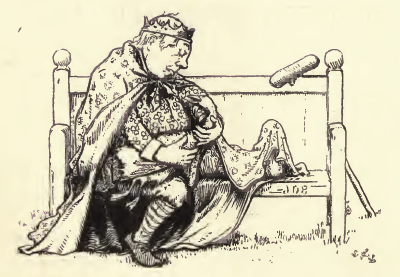Reading Notes: Celtic Fairy Tales, Reading B

King on his "Throne" by Joseph Jacobs King O'Toole and His Goose I did not like reading B as much as reading A. The stories seemed to have less depth and were not as engaging for me. But compared to other units we have read in this class, this is still one of the mroe interesting readings that I have done so far. The story that stood out to me the most was the King O'Toole and His Goose. The story gave such a lighthearted, carefree tone that made me feel good. I don't know if anyone else will see it this way, but that was my first impression after reading this story. That being said, I was really said when the Goose was killed but not eaten at the end of the story. I really wanted the king and his goose to be together forever. This story is part of the Celtic Fairy Tales (1) unit . Story source: Celtic Fairy Tales by Joseph Jacobs with illustrations by John D. Batten (1892) King O'Toole and His Goose




_-_WGA08586.jpg)
